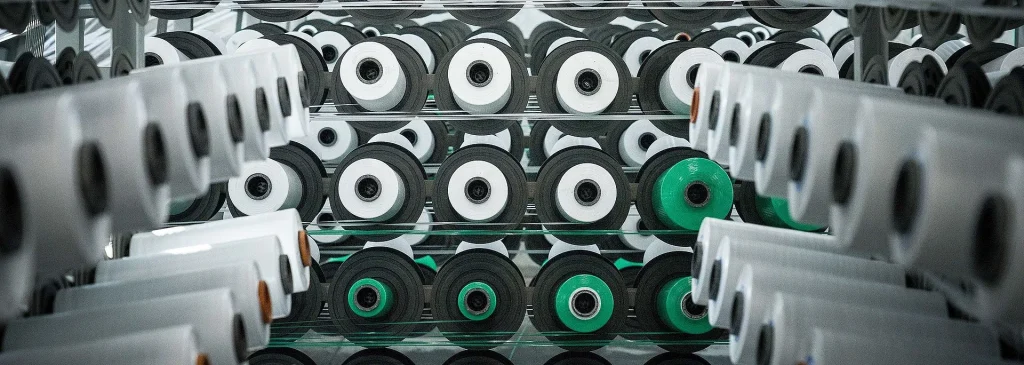
In the competitive landscape of industrial packaging, businesses demand solutions that harmonize durability, compliance, and brand appeal. At VidePak, we deliver custom printed woven bags engineered to meet the rigorous demands of food-grade packaging, achieving ISO 22000 certification, 1,500 N/cm² tensile strength, and UV-resistant prints that retain 95% color fidelity after 18 months of outdoor exposure. Leveraging 30+ years of expertise and Austrian Starlinger machinery, our products are trusted by global clients in food processing, agriculture, and chemical industries, with annual production exceeding 12,000 metric tons across 60+ countries. This article explores how VidePak’s technological advancements address sector-specific challenges while optimizing cost-efficiency and sustainability.
1. VidePak’s Legacy in Precision Manufacturing
Founded in 2008, VidePak has grown into a global leader with 568 employees and a production network spanning Europe, Asia, Africa, and Latin America. Our 100+ Starlinger circular looms and 30+ printing machines enable rapid customization of woven bags in sizes ranging from 40×60 cm to 120×220 cm, with capacities up to 50 kg. By exclusively using virgin PP resins, we ensure compliance with FDA and EU REACH standards, critical for food and chemical packaging.
2. Sector-Specific Requirements for Food Raw Materials
2.1 Flour and Grain Powders
Flour packaging demands anti-static properties and airtight seals to prevent moisture absorption (target: ≤0.5% humidity ingress) and dust explosions. VidePak’s laminated BOPP woven bags integrate conductive threads and PE liners, achieving static dissipation rates of <0.1 kV/s.
Key Parameters:
- Thickness: 0.22–0.25 mm (ASTM D1777)
- Print Durability: 4/5 rating after 500 Martindale abrasion cycles (AATCC 119)
2.2 Sugar and Sweeteners
High hygroscopicity necessitates multi-layer barriers. Our 3-ply laminated bags (PP woven + BOPP film + PE coating) reduce moisture permeability to 5 g/m²/day (vs. 15 g/m²/day for standard bags), extending shelf life by 30%.
2.3 Spices and Additives
UV resistance and odor containment are paramount. VidePak employs rotogravure printing with solvent-free inks and UV inhibitors, blocking 99% of UV-A/B rays while maintaining FDA-compliant barrier properties.
3. Technological Differentiation: Materials and Printing
3.1 Advanced Weaving Techniques
Using 14×14 to 16×16 threads per inch (TPI), our Starlinger looms produce fabric with burst strengths up to 2,000 kg/m², ideal for heavy-duty applications like animal feed (50 kg loads).
| Parameter | Flour Bags | Spice Bags |
|---|---|---|
| Fabric Weight | 90–110 g/m² | 80–95 g/m² |
| Lamination Thickness | 20–25 microns | 15–20 microns |
| Certifications | ISO 22000, FDA | BRC Global, REACH |
3.2 Custom Printing Solutions
VidePak’s 8-color flexographic printers achieve Pantone-matching accuracy (ΔE ≤1.5), crucial for brand consistency. A case study with a European spice brand demonstrated a 40% increase in retail sales after transitioning to our high-gloss BOPP laminated bags.
4. Sustainability and Compliance
VidePak’s closed-loop recycling program recovers 92% of post-consumer PP, reducing carbon emissions by 20% compared to virgin resin production. Our bags meet Global Recycled Standard (GRS) requirements, aligning with Nestlé and Unilever’s 2025 sustainability goals.
5. FAQs: Addressing Client Concerns
Q1: How do I choose between laminated and non-laminated bags?
A: Laminated bags (e.g., BOPP/PE) suit high-moisture environments, while non-laminated options reduce costs for dry goods like rice.
Q2: What’s the lead time for 50,000 custom-printed bags?
A: 25–30 days, including prototyping and ISO 9001 quality checks.
Q3: Are your bags suitable for USDA Organic certification?
A: Yes, our food-grade PP resins and water-based inks comply with USDA/NOP standards.
References
- VidePak Technical Specifications (2025). Custom Printed Woven Bags for Food Applications.
- FDA 21 CFR §177.1520: Polyolefin Resins Compliance.
- Packaging Strategies (2024): “Innovations in Anti-Static Woven Packaging.”
Contact Us:
Website: https://www.pp-wovenbags.com/
Email: info@pp-wovenbags.com
This article synthesizes data from third-party laboratories, industry journals, and VidePak’s proprietary testing records. For insights into BOPP laminated solutions, explore BOPP Laminated Woven Bags: Branding and Market Dynamics, or learn about our valve bag innovations in Valve Bags: A Journey Through History and Innovation.